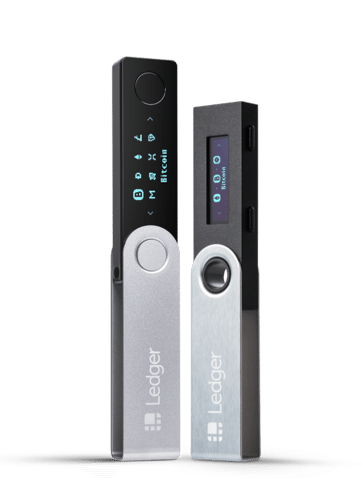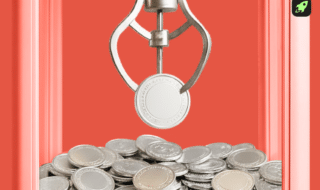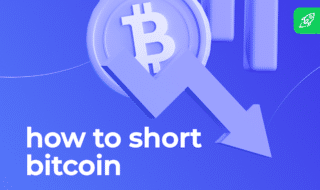Bitcoin undeniably shook up the world. It was something totally unique — a fully digital currency that has no physical form. As a result, it required creation of a brand new type of storage — crypto wallets.
Getting a digital wallet is an essential part of any crypto investor’s journey, and “how to create a Bitcoin wallet” is often the first thing many budding crypto enthusiasts search on Google. However, a lot of people still find the whole concept of crypto wallets really confusing, being hesitant to get into crypto because of the necessity of having to create one. In reality, getting a reliable Bitcoin wallet is as easy as ABC.
Table of Contents
What is a Bitcoin Wallet?
A Bitcoin wallet is a cryptocurrency wallet that can be used to store, send, and receive BTC. Just like a real, physical wallet it can keep your money safe and secure when you aren’t using it, and it can be easily accessed once you decide to buy more or sell your coins.
Unlike a traditional wallet, however, a Bitcoin wallet doesn’t store actual Bitcoins. A cryptocurrency wallet stores private keys — cryptographic information that is used to access Bitcoin addresses and carry out transactions. Many Bitcoin wallets also support other cryptocurrencies.
Types of Bitcoin Wallets
There are quite a few different types of Bitcoin wallets out there. The wide variety of available storage options ensures that all kinds of investors will be able to find a cryptocurrency wallet that will be the best fit for them.
All crypto wallets have their pros and cons, as they are good for different types of users. Let’s take a closer look at them.
Software Wallet
A software wallet is one that doesn’t have a physical form.
Exchange wallets
The first type of crypto wallets you will most likely encounter are exchange wallets. These are basically your accounts on crypto and non-crypto exchange platforms that can store the digital currency you have purchased or exchanged on that particular website.
Exchange wallets are perfect for absolute newbies who are just testing the waters and are not planning to purchase a big amount of crypto yet. Exchange wallets are relatively secure and reliable, but usually come with unfavorably high withdrawal fees and other drawbacks such as only being usable on that particular platform. However, they’re free and easy to use.
Web wallets
One of the most common types of software wallets are web wallets. These are browser extensions or websites that can store your private keys in a safe yet easily accessible manner. Many web wallets support multiple coins and tokens.
This type of Bitcoin wallets is extremely easy to use and is most often free. Web wallets allow users to quickly access and transfer their assets from any device. However, the accessibility web wallets provide comes at a cost: they are usually a lot less secure than other wallet types as they are directly connected to the Internet.
Desktop wallets
Desktop wallets are programs that you install on your computer to store your private keys. One can say that they are a perfect mix of the best features of always-online web wallets and extremely secure cold hardware wallets.
Just like other types of software wallets, desktop wallets offer users high accessibility and are rather secure, but they are not fully protected against hacker attacks, especially if you are not careful when it comes to cybersecurity.
Mobile Wallet

A mobile wallet is an app that allows users to manage and control their assets on their mobile device. A cryptocurrency wallet app is similar to a desktop wallet but allows for greater mobility, so it is an excellent choice for people who need to move around a lot and always have their mobile device with them.
Mobile wallets are technically software wallets, but we decided to give them their own category because of how widespread and easy-to-use they are. Many mobile wallets have incredibly high standards of security that don’t come at the expense of usability.
As they are most often free, mobile wallets are probably the most popular type of crypto wallets. They are an excellent choice for people who want to make a lot of transactions while still keeping their funds safe.
Hardware Wallet

An opposite of a software wallet, a hardware wallet is a physical device that stores your private key. It is a secure and reliable way to keep your coins safe, especially since hardware wallets can be used as cold storage (i.e., be fully disconnected from the Internet).
Quite a few hardware wallet models allow you to store different coins and tokens on one device. The main disadvantage of using hardware wallets is that they make it slightly harder to make transactions and are a little more awkward to use than most software wallets. Bitcoin hardware wallets are perfect for people buying large amounts of crypto and those that choose to invest for the long term.
Paper Wallet
A paper wallet is a piece of paper that contains private keys and QR codes that can be used to make outgoing and incoming transactions. They are considered by many to be the most secure type of crypto wallets as paper wallets are completely disconnected from the Internet. However, paper wallets have one huge downside: they can be easily lost. After all, a paper wallet is just a piece of paper, and unlike a wallet app, it cannot be simply reinstalled on another device. There have been many horror stories about people losing their Bitcoin paper wallet with hundreds of BTC stored on it.
Step-by-Step Guide
While Bitcoin wallets often have different features and requirements, they are usually created in the same way. Here’s how you can create a software crypto wallet:
- Pick which type of wallet you want to get (web, desktop, mobile).
- Find that Bitcoin wallet, and then download and install it, if needed.
- Create an account.
- Generate a reliable password.
- Get your Bitcoin receiving address.
- Make a secure backup of your wallet (with a seed phrase or 2FA).
Getting a hardware crypto wallet is a little more time-consuming. You will first need to order it online and wait for it to arrive or go to a shop to buy it. Then, simply follow the instructions provided by its manufacturer — some hardware wallets require you to install some additional software on your PC or mobile device, some can be set up on the device itself, and so on.
Hardware wallets are a little harder to start using than mobile ones, but that’s the price that has to be paid for additional security and reliability.
What’s a Bitcoin Receiving Address?
Just like the name suggests, a Bitcoin receiving address is an address that you use to get Bitcoin sent to your wallet. Every crypto wallet has a receiving address.
A Bitcoin address is similar to a bank account number, but is alphanumeric instead of containing only digits. It always begins with a 1 or a 3, is usually rather long, and contains both capital and lowercase letters. Here’s an example of a typical Bitcoin receiving address: 3JdVit42rCVqwKlvBN98nHjSFmeKLorYr4.
All receiving addresses are created automatically — if you have created a Bitcoin wallet, that means you already have a brand new unique BTC receiving address. A new address is not just produced when you create a wallet, but after every transaction you make. Old addresses do not expire and can be used again. All the created addresses can be found in the transaction history of your crypto wallet.
Since Bitcoin addresses are rather complex, you should be careful and always double-check all crypto addresses you enter. Alternatively, you can use services like FIO Protocol to transform your long and complex Bitcoin receiving addresses into something a little more human-readable.
If you need to buy and send Bitcoin instantly with no verification, Changelly provides a quick and hassle-free solution.
FAQ
What is the best and safest Bitcoin wallet?
The safest and most secure Bitcoin wallet will always be a hardware one — Ledger, Trezor, and others. Paper wallets are also incredibly secure from hacker attacks, but can be lost quite easily.
What is the easiest Bitcoin wallet to use?
The easiest Bitcoin wallet to use is probably a mobile wallet app, as it can be installed on a smartphone and usually has an extremely user-friendly interface. Web and exchange wallets are also incredibly easy to use.
Do I need a wallet to buy Bitcoin?
If you want to sell Bitcoin soon after you buy it, and you are purchasing a small amount, you can keep your BTC in an exchange wallet. Otherwise, or if you buy Bitcoin on an exchange that doesn’t have an in-built digital wallet, you will need to get a dedicated Bitcoin wallet.
How do I transfer Bitcoin to my wallet?
If you want to buy Bitcoin, just enter your BTC receiving address into the recipient field to have the exchange/marketplace send the coins straight to your wallet. Most Bitcoin wallets also have in-built features that allow you to transfer funds from one wallet to another.











